Stretching maximizes muscle performance while reducing the risk of injury during exercise and daily activities. Stretching for the whole body increases blood flow to the muscles, resulting in maximum comfort of movement, and less stress on the joints.
Such benefits make stretching a great way to start and end a workout, as well as getting your muscles ready for the day, improve posture, and even sleep quality. In addition, stretching the muscles in some cases helps to ease or eliminate back pain. Today estet-portal.com will introduce you to exercises that will help prepare all the muscles of the body for work.
Full Body Stretch: Getting Your Muscles Ready
It is important to understand that stretching for the whole body is needed not only by athletes, but by every modern person. Long stay in an uncomfortable position, insufficient physical activity and other factors contribute to the appearance of muscular back pain. Another vulnerable point of modern man is the neck.
Before exercising, make sure there are no serious injuries or other muscle damage!
In this article, we will look at static stretching exercises. However, if your goal is – prepare for an intense workout, it is better to choose a dynamic stretch. The exercises described by estet-portal.com are well suited to complete the classes.
Pain during stretching may indicate incorrect exercise or serious injury.
- Breast Stretch
Exercising the muscles of the chest and shoulders can lead to pain in the neck and upper back. Constant sitting in a sitting position leads to a violation of muscle balance: some muscles are constantly tense, while others – relaxed. In addition to stretching, it is also necessary to monitor your posture while working at the computer.
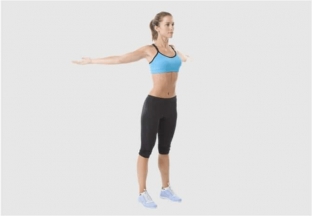
- become straight, stretch your arms in front of you, keep your palms together;
- inhale deeply;
- slowly exhaling, "open" chest muscles, trying to spread the arms as far as possible behind the back;
- bring your shoulder blades together;
- stay at this point for 20-30 seconds;
- repeat 2-3 times.
- Tricep Stretch
If you don't do special exercises for the triceps regularly, they, unlike the biceps, are used less in everyday life. The result of this state of affairs may be muscle imbalance.
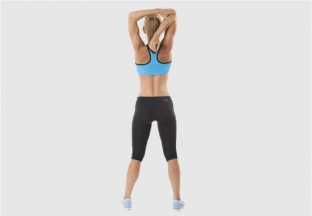
- raise your right hand above your head;
- bend her at the elbow;
- put your left hand on your right elbow;
- gently press on your right elbow, pulling it back and down until you feel tension (but not pain!);
- after 20-30 seconds, lower your hand;
- repeat with left arm.
- Low back stretch
The muscles of the back – one of the most important and at the same time vulnerable muscle groups of our body. Any careless movement can cause pain in the back muscles. That is why they need daily stretching.
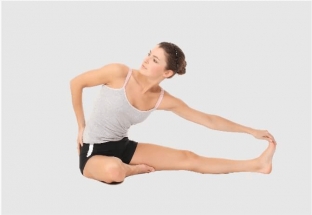
- sit down on the floor;
- straighten legs in front of you;
- bend the right leg and put the foot on the inside of the thigh of the left leg;
- keep the right foot on the floor;
- we inhale deeply and exhale;
- put the right hand on the lower back;
- holding both buttocks on the floor, stretch forward;
- grab the left foot with the left hand;
- keep in this position for 20-30 seconds;
- repeat the stretch on the other side.
- Thigh Stretch
The flexibility of these muscles is extremely important for the health of the back, hips and knees. Overstraining the muscles of the thighs is fraught with excessive tension in the lower back, as well as leg injuries.
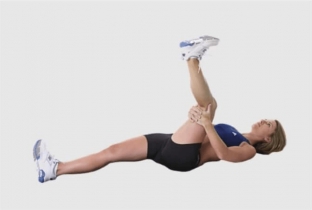
- lying on your back;
- legs are fully extended;
- we put our hands along the body;
- raise the left leg, slightly bending it at the knee;
- grasp the left thigh with both hands;
- holding the head and shoulders on the floor, straighten the left leg as much as possible (without pain!), without blocking it in the knee joint;
- foot should be parallel to the floor;
- linger in the indicated position for 20-30 seconds;
- relax and repeat 2-3 times;
- Change the leg and do the same.
- Piriformis Stretch
The piriformis "became famous" one of the reasons for the appearance of pain in the lower back, sometimes extending to the lower extremities. As a result of overexertion of this muscle, the sciatic nerve can be pinched, which leads to burning pain from the buttocks to the feet. It is this muscle that keeps the sacrum stable.
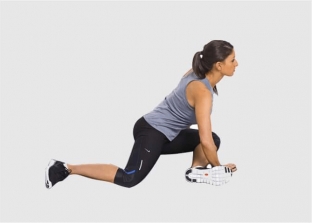
- sit down on the floor;
- one foot (let's say the right one) is put in front, the other – back;
- both legs are bent at an angle of 90 degrees;
- We try to keep the chest and spine straight;
- neutral position of the spine is important;
- we lower the upper part of the body to the front leg, we feel how the muscles in the buttocks area are stretched;
- hold the position for 20-30 seconds;
- repeat three times on each side.
Read also: What You Really Pull: Stretching Muscles in Pictures.
- Calf Stretch
Ladies who wear high heels daily and runners are the most likely to experience pain in this area. However, the cause of pain can be both frequent walking and prolonged standing.
- we stand at a distance slightly less than an outstretched hand to the wall;
- keeping feet parallel, place left foot forward until toes touch wall;
- bend the right leg at the knee and lean forward a little to rest our hands against the wall;
- keep the standing leg straight, resting the foot on the floor;
- After 20-30 seconds, repeat with the other leg.
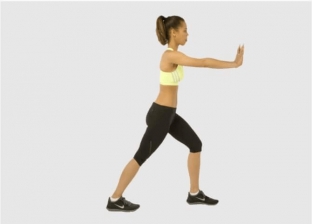
To stretch the soleus muscle:
- bend both legs at the knees;
- we transfer the weight to the toes, but do not lift the heel off the floor;
- hold in position for 10-30 seconds.
Done! Full body stretch completed! Perform the above exercises daily to prevent the occurrence of pain caused by overexertion of these muscles. If you are already worried about muscle pain, estet-portal.com recommends consulting a specialist.






Add a comment